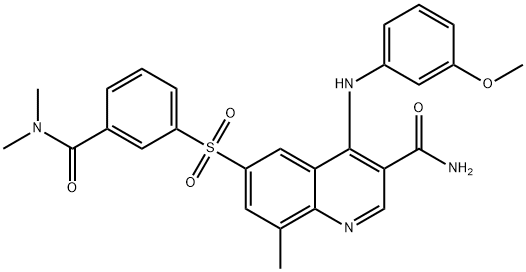Pimobendan
Synonym(s):(RS)-6-[2-(4-Methoxyphenyl)-1H-benzimidazol-5-yl]-5-methyl-4,5-dihydropyridazin-3(2H)-one;4,5-Dihydro-6-[2-(4-methoxyphenyl)-1H-benzimidazol-6-yl]-5-methyl-3(2H)-pyridazinone;4,5-Dihydro-6-[2-(4-methoxyphenyl)-1H-benzimidazol-5-yl]-5-methyl-3(2H)-pyridazinone;4,5-Dihydro-6-[2-(4-methoxyphenyl)-1H-benzimidazol-6-yl]-5-methyl-3(2H)-pyridazinone;Pimobendan
- CAS NO.:74150-27-9
- Empirical Formula: C19H18N4O2
- Molecular Weight: 334.37
- MDL number: MFCD00761648
- EINECS: 640-420-7
- SAFETY DATA SHEET (SDS)
- Update Date: 2025-12-23 13:58:55

What is Pimobendan?
Description
Pimobendan, a novel cardiotonic vasodilator, was introduced in Japan for the treatment of acute and mild to moderate chronic heart failure. It is a phosphodiesterase Ⅲ inhibitor and is able to enhance sensitization of myocardial contractile regulatory protein to calcium ions. The combination of these effects contribute to its inotropic activity. In patients with severe congestive heart failure, orally administered pimobendan improves cardiac index, stroke volume index, pulmonary wedge pressure, and systemic and pulmonary vascular resistance. Pimobendan is reported to be well tolerated and largely devoid of the proarrhythmic effects of classical phosphodiesterase Ill inhibitors. Studies also suggested that combination of the inotropic agent pimobendan with an ACE inhibitor such as enalapril may be superior to monotherapy for heart failure patients.
Chemical properties
White Solid
Originator
Boehringer lngelhelm (Germany)
The Uses of Pimobendan
Pimobendan is a cardiotonic agent. The study of the cardiotonic mechanism of Pimobendan using ventricular muscles from rabbits and guinea pigs suggests that Pimobendan acts by inhibiting phosphodiesterase III and potassium channel. The potent venodilating action of Pimobendan makes it a suitable treatment option for patients with congestive heart failure (CHF) as it also improves systemic vasoconstriction.
The Uses of Pimobendan
Pimobendan is a selective inhibitor of PDE3 with IC50 of 0.32 μM. It is a drug with both inotropic and vasodilatory properties that is used for the treatment of var-ious cardiac diseases.
Definition
ChEBI: Pimobendan is a pyridazinone and a member of benzimidazoles. It has a role as a cardiotonic drug, a vasodilator agent and an EC 3.1.4.* (phosphoric diester hydrolase) inhibitor.
brand name
Acardl
Biological Activity
Pimobendan is an inhibitor of phosphodiesterase 3 (PDE3; IC50 = 0.32 μM for guinea pig cardiac enzyme) that is selective for PDE3 over PDE1, PDE2, and PDE4 (IC50s = >30 μM). It is also a calcium sensitizer, decreasing the concentration of calcium required for half-maximal contractile force in isolated, skinned porcine ventricular fibers. Pimobendan increases the force of contraction in electrically-stimulated isolated guinea pig papillary muscles with an EC50 value of 6 μM, indicating positive inotropic effects. It increases survival time in dogs with congestive heart failure due to myxomatous mitral valve disease when administered in combination with angiotensin-converting enzyme inhibitors and furosemide . Formulations containing pimobendan have been used in the treatment of heart failure in dogs.
Biochem/physiol Actions
Pimobendan is an inotropic agent with a dual mechanism of action: it increases myocardial contractility by increasing calcium sensitization to troponin C and it promotes vasodilation by inhibiting phosphodiesterase III (PDE3). Pimobendan has been studied for treating heart failure and cardiomyopathy, primarily for veterinary uses.
Mechanism of action
The mechanism of mild mitral regurgitation (MR) in dogs treated with Pimobendan is a dual mechanism of action, which enhances myocardial contractility by increasing calcium sensitisation of troponin C and promotes vasodilatation by inhibiting PDEIII.
Side Effects
The most common side effects include gastrointestinal effects such as decreased appetite, and diarrhea. Other possible side effects include lethargy and difficulty breathing This short-acting medication should stop working within 24 hours, although effects can be longer in pets with liver or kidney disease.
Veterinary Drugs and Treatments
Pimobendan is used to treat dogs with congestive heart failure secondary to dilated cardiomyopathy or chronic mitral valve insufficiency (CMVI).
in vitro
In vitro, pimobendan was O-demethylated and subsequently O-glucuronidated. The rate of metabolism of pimobendan could be maintained in this culture system for > 3 weeks. However, the relative amount of a putative N-glucuronide under in vitro conditions was lower than in vivo[1].
References
[1] S A Pahernik. “Metabolism of pimobendan in long-term human hepatocyte culture: in vivo-in vitro comparison.” Xenobiotica 25 8 (1995): 811–23.
Properties of Pimobendan
| Melting point: | approximate 243℃ (dec.) |
| Density | 1.36 |
| storage temp. | 2-8°C |
| solubility | DMSO: soluble5mg/mL, clear (warmed) |
| pka | 10.55±0.10(Predicted) |
| form | powder |
| color | white to beige |
| InChI | InChI=1S/C19H18N4O2/c1-11-9-17(24)22-23-18(11)13-5-8-15-16(10-13)21-19(20-15)12-3-6-14(25-2)7-4-12/h3-8,10-11H,9H2,1-2H3,(H,20,21)(H,22,24) |
| CAS DataBase Reference | 74150-27-9(CAS DataBase Reference) |
Safety information for Pimobendan
| Signal word | Danger |
| Pictogram(s) |
 Skull and Crossbones Acute Toxicity GHS06 |
| GHS Hazard Statements |
H301:Acute toxicity,oral |
Computed Descriptors for Pimobendan
| InChIKey | GLBJJMFZWDBELO-UHFFFAOYSA-N |
| SMILES | C1(=O)NN=C(C2C=C3NC(C4=CC=C(OC)C=C4)=NC3=CC=2)C(C)C1 |
Pimobendan manufacturer
New Products
Indole Methyl Resin tert-butyl 9-methoxy-3-azaspiro[5.5]undecane-3-carboxylate Boc-His(Boc)-OH 2-CTC Resin 4-Chloro-7-tosy1-7Hpyrrolo[2,3-d]pyrimidine 5,7-Dibromo-1H-indole 2,5-dichloro-N-hydroxy-4,6-dimethylpyridine-3-carboximidamide 2,2-Dimethoxy-7-azaspiro[3.5]nonane hydrochloride 4-chloromethyl-5-methyl-1,3-dioxol-2-one (DMDO-Cl) R-2-BENZYLOXY PROPIONIC ACID 1,1’-CARBONYLDIIMIDAZOLE 1,1’-CARBONYLDI (1,2-4 TRIAZOLE) N-METHYL INDAZOLE-3-CARBOXYLIC ACID 4-((2-hydroxyethyl)thio)benzoic acid 1-(TERT-BUTOXYCARBONYL)-2-PYRROLIDINONE Methyl 6-methylnicotinate 3-Pyridineacrylic acid tert-Butyl carbazate TETRAHYDRO-2H-PYRAN-3-OL 2-((4-morpholinophenylamino) (methylthio) methylene) malononitrile 3-(4-morpholinophenylamino)-5-amino-1H-pyrazole-4-carbonitrile 2,4-dihydroxybenzaldehyde 1,3-Diethyl-1,3-Diphenylurea Methyl 2-methylquinoline-6-carboxylateRelated products of tetrahydrofuran








You may like
-
 74150-27-9 Pimobendan 98%View Details
74150-27-9 Pimobendan 98%View Details
74150-27-9 -
 Pimobendan 98% CAS 74150-27-9View Details
Pimobendan 98% CAS 74150-27-9View Details
74150-27-9 -
 Pimobendan CAS 74150-27-9View Details
Pimobendan CAS 74150-27-9View Details
74150-27-9 -
 Pimobendan CAS 74150-27-9View Details
Pimobendan CAS 74150-27-9View Details
74150-27-9 -
 Pimobendan API PowderView Details
Pimobendan API PowderView Details
74150-27-9 -
 Pyridine 99.5% HPLC /UV SpectroscopyView Details
Pyridine 99.5% HPLC /UV SpectroscopyView Details
110-86-1 -
 Dibutyl PhthalateView Details
Dibutyl PhthalateView Details
84-74-2 -
 Thiourea 99% ARView Details
Thiourea 99% ARView Details
62-56-6
